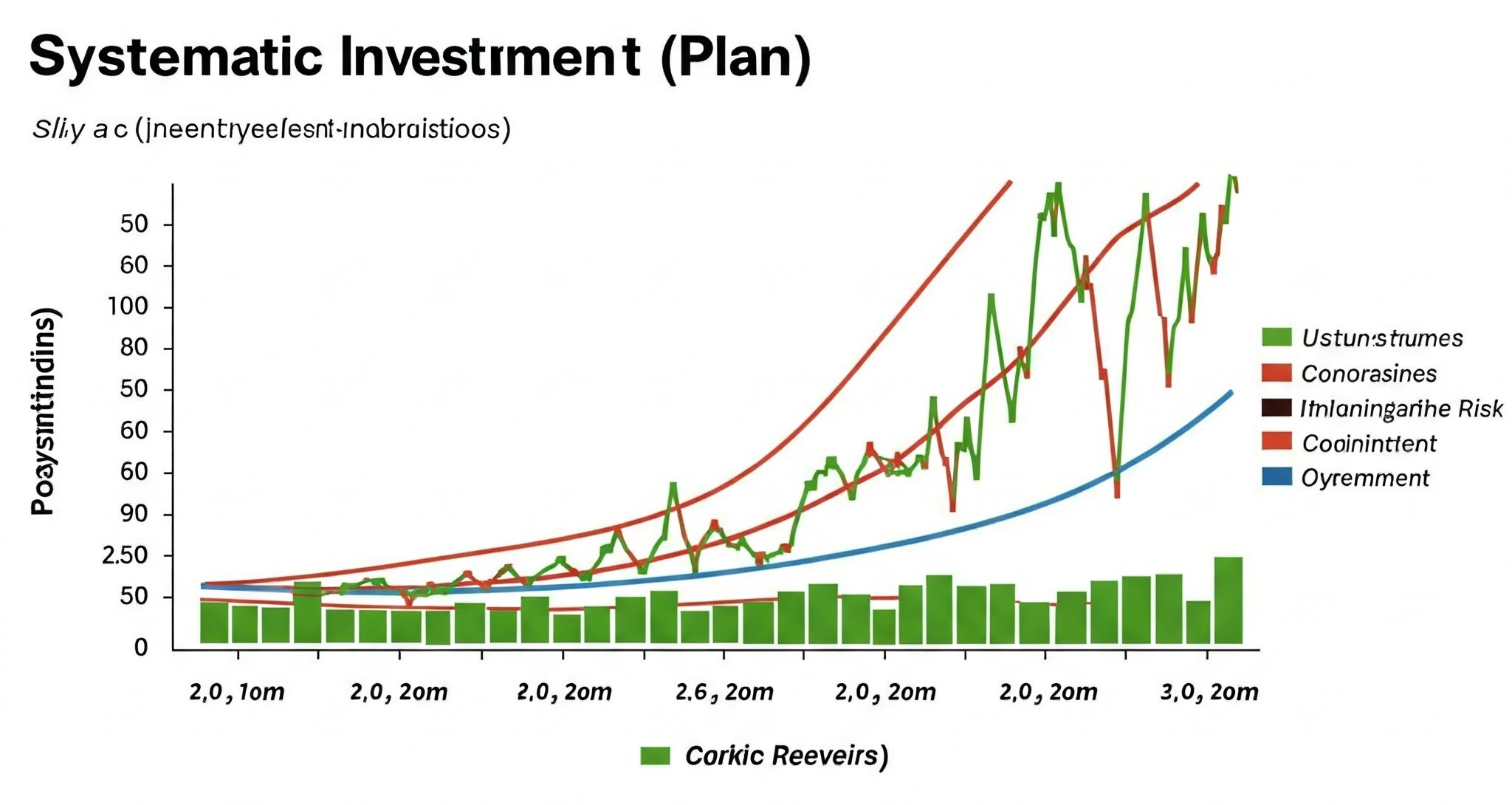Discover the 10 best SIP plans in 2024 for wealth creation. Compare equity, hybrid, and tax-saving SIPS with returns, risks, and expert tips to choose wisely.
Introduction
Investing through Systematic Investment Plans (SIPs) is one of the smartest ways to build wealth over time. With thousands of mutual fund schemes available, choosing the best SIP plans can feel overwhelming. To simplify your decision, we’ve curated a list of the top 10 SIP plans in 2024 based on historical performance, fund management expertise, and risk-adjusted returns. Whether you’re a newbie or a seasoned investor, this guide will help you pick the right SIP to align with your goals.
SIP Investment Guide: Understanding SIPs and How to Choose the Best Plan for You
What Makes a SIP Plan “The Best”?
Before diving into the list, understand the criteria for selecting top SIP plans:
-
Consistent Returns: Look for funds that outperform benchmarks over 5–7 years.
-
Low Expense Ratio: Fees should ideally be below 1.5%.
-
Experienced Fund Management: Stable teams with a proven track record.
-
Risk Management: Low volatility and drawdowns during market corrections.
-
Diversification: Exposure to quality stocks or bonds.

7 Proven Investment Strategies for Volatile Markets
Top 10 Best SIP Plans to Invest in 2024
1. Axis Bluechip Fund (Large-Cap Equity)
-
Category: Large-Cap
-
Risk Level: Moderate
-
5-Year CAGR: ~16%
-
Why Invest? Focuses on bluechip stocks like Reliance, HDFC Bank, and Infosys. Ideal for steady growth with lower volatility.
-
Minimum SIP: ₹500/month
2. Parag Parikh Flexi Cap Fund (Flexi-Cap Equity)
-
Category: Flexi-Cap
-
Risk Level: Moderately High
-
5-Year CAGR: ~18%
-
Why Invest? Invests flexibly across market caps and international equities. Known for value investing.
-
Minimum SIP: ₹1,000/month
3. Mirae Asset Emerging Bluechip Fund (Mid-Cap Equity)
-
Category: Mid-Cap
-
Risk Level: High
-
5-Year CAGR: ~20%
-
Why Invest? Targets high-growth mid-sized companies like Persistent Systems and Tata Elxsi.
-
Minimum SIP: ₹1,000/month

7 Proven Investment Strategies for Volatile Markets
4. SBI Small Cap Fund (Small-Cap Equity)
-
Category: Small-Cap
-
Risk Level: Very High
-
5-Year CAGR: ~24%
-
Why Invest? Aggressive growth potential with stocks like Hindustan Aeronautics. Best for long-term horizons (7+ years).
-
Minimum SIP: ₹500/month
-
How Geopolitical Events Impact Indian Markets: Risks, Trends, and Strategies
5. HDFC Balanced Advantage Fund (Hybrid)
-
Category: Hybrid (Dynamic Asset Allocation)
-
Risk Level: Moderate
-
5-Year CAGR: ~14%
-
Why Invest? Automatically shifts between equity and debt based on market valuations. Reduces downside risk.
-
Minimum SIP: ₹500/month

Top Performing Indian Stocks in 2025
6. Nippon India Growth Fund (Mid-Cap Focus)
-
Category: Mid-Cap
-
Risk Level: High
-
5-Year CAGR: ~22%
-
Why Invest? Consistently beats its benchmark with holdings in sectors like chemicals and renewables.
-
Minimum SIP: ₹100/month
7. ICICI Prudential Equity & Debt Fund (Multi-Asset)
-
Category: Hybrid
-
Risk Level: Moderate
-
5-Year CAGR: ~15%
-
Why Invest? Diversifies across equity, debt, and gold for balanced returns.
-
Minimum SIP: ₹1,000/month
8. Kotak Emerging Equity Fund (Mid & Small-Cap)
-
Category: Mid-Cap
-
Risk Level: High
-
5-Year CAGR: ~19%
-
Why Invest? Strong focus on emerging sectors like EVs and fintech.
-
Minimum SIP: ₹1,000/month

Tata Technologies IPO
9. Aditya Birla Sun Life Tax Relief 96 (ELSS)
-
Category: ELSS (Tax-Saving)
-
Risk Level: High
-
5-Year CAGR: ~17%
-
Why Invest? Save taxes under Section 80C while earning equity-linked returns. Lock-in period: 3 years.
-
Minimum SIP: ₹500/month
10. UTI Nifty 50 Index Fund (Index Fund)
-
Category: Large-Cap (Passive)
-
Risk Level: Low-Moderate
-
5-Year CAGR: ~12%
-
Why Invest? Mirrors the Nifty 50 at a low cost. Perfect for passive investors.
-
Minimum SIP: ₹500/month
How to Choose the Best SIP Plan for You
-
Match Goals with Fund Category:
-
Long-term wealth? Opt for equity SIPs (mid-cap, small-cap).
-
Short-term safety? Choose debt or hybrid SIPs.
-
-
Check Consistency: Avoid funds with erratic returns.
-
Diversify: Spread investments across 2–3 fund categories.
-
Use SIP Calculators: Estimate returns using tools like Scripbox or ET Money.
-
AI and Automation: Revolutionizing the Indian Stock Market in 2025-26
3 Pro Tips for SIP Success
-
Start Early: A ₹5,000/month SIP at 12% returns grows to ₹50 lakhs in 15 years.
-
Increase SIP Amount Annually: Boost contributions by 10% yearly to accelerate growth.
-
Stay Patient: Avoid withdrawing during market downturns—let rupee cost averaging work.
Common Mistakes to Avoid
-
Ignoring Asset Allocation: Don’t put all money in one fund type.
-
Chasing “Top-Performing” Funds: Past returns ≠ future results.
-
Overlooking Expense Ratios: High fees eat into long-term gains.
-
Top Performing Indian Stocks in 2025: Expert Picks for High Growth

Waaree Energies IPOWaaree Energies IPO
FAQs
Q1. Which SIP gives the highest return?
Small-cap and mid-cap SIPs historically deliver higher returns but come with higher risk.
Q2. Can I invest in multiple SIPs?
Yes! Diversifying across fund types reduces risk.
Q3. Are SIPs better than lump-sum investments?
SIPs reduce timing risk, making them safer for volatile markets.
Q4. What if I miss a SIP installment?
Most funds allow a 1–2 month grace period before lapsing.
Conclusion: Build Wealth One SIP at a Time
The best SIP plans combine consistency, low costs, and expert management. While the above list highlights top performers in 2024, always align your choice with personal goals and risk tolerance. Start with a small SIP, stay disciplined, and let compounding turn your monthly contributions into a financial legacy.
Why Is the Share Market Down Today? Key Reasons Behind the Sudden Dip
